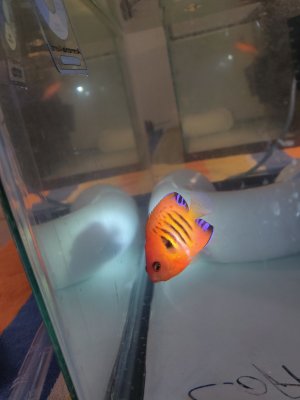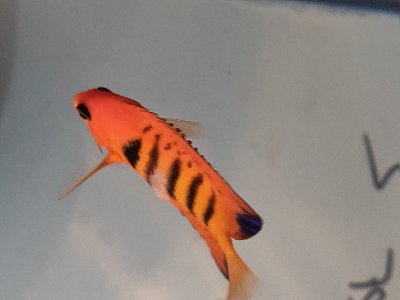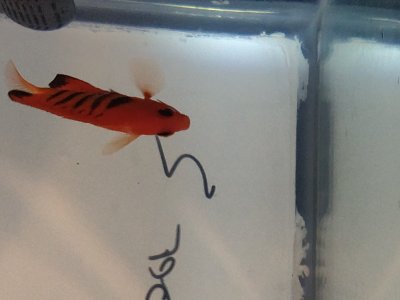- Joined
- Jun 22, 2018
- Messages
- 25
- Reaction score
- 4
I have a flame angel I picked up about a week ago, was looking good and eating well. I started to slowly ramp up copper, but it stopped eating yesterday so I did a water change and added carbon. This morning it was having issues with swimming and I noticed damage to it's skin on each side. I think it's Brook, but I've never dealt with it. When viewed from above the should is sticking out, which is why I'm thinking Brook.
I pulled the fish and gave it it a Ruby Reef Rally bath and moved it into a new tank, which I dosed with API General Cure. It's lying on it's side periodically and having issues swimming when it's up. I've covered the tank, unplugged the heat (room is at 75, so it's not going to get that cold), dropped salinity, and started running pure oxygen in through a stainless diffusion stone.
two questions:
does my diagnosis sound correct?
is there anything else that I can do besides wait?



I pulled the fish and gave it it a Ruby Reef Rally bath and moved it into a new tank, which I dosed with API General Cure. It's lying on it's side periodically and having issues swimming when it's up. I've covered the tank, unplugged the heat (room is at 75, so it's not going to get that cold), dropped salinity, and started running pure oxygen in through a stainless diffusion stone.
two questions:
does my diagnosis sound correct?
is there anything else that I can do besides wait?


















